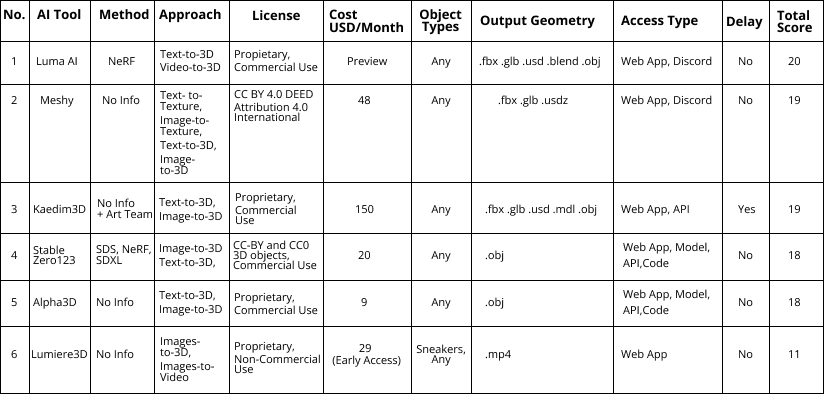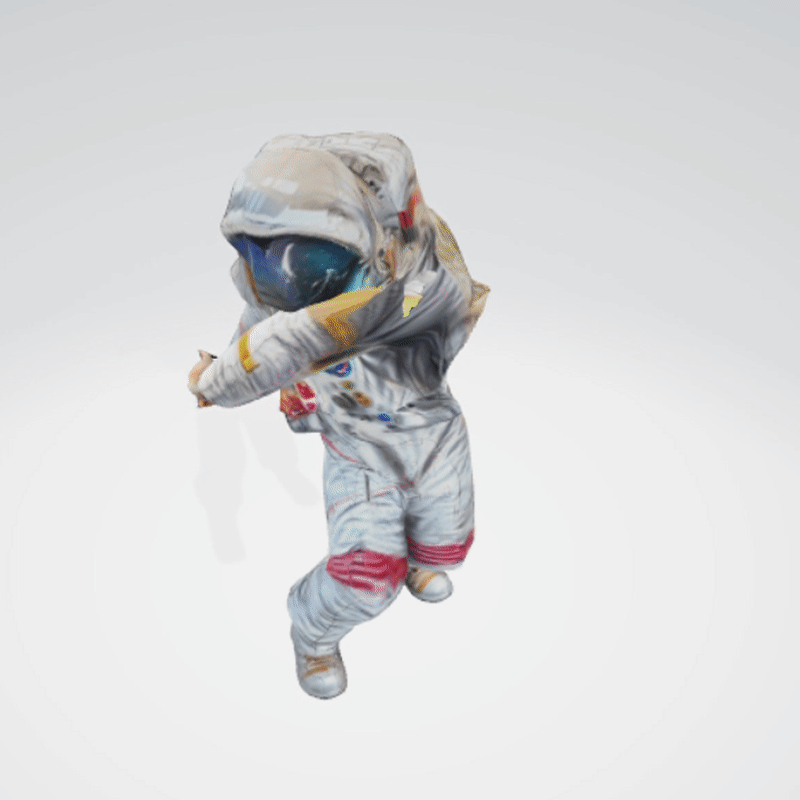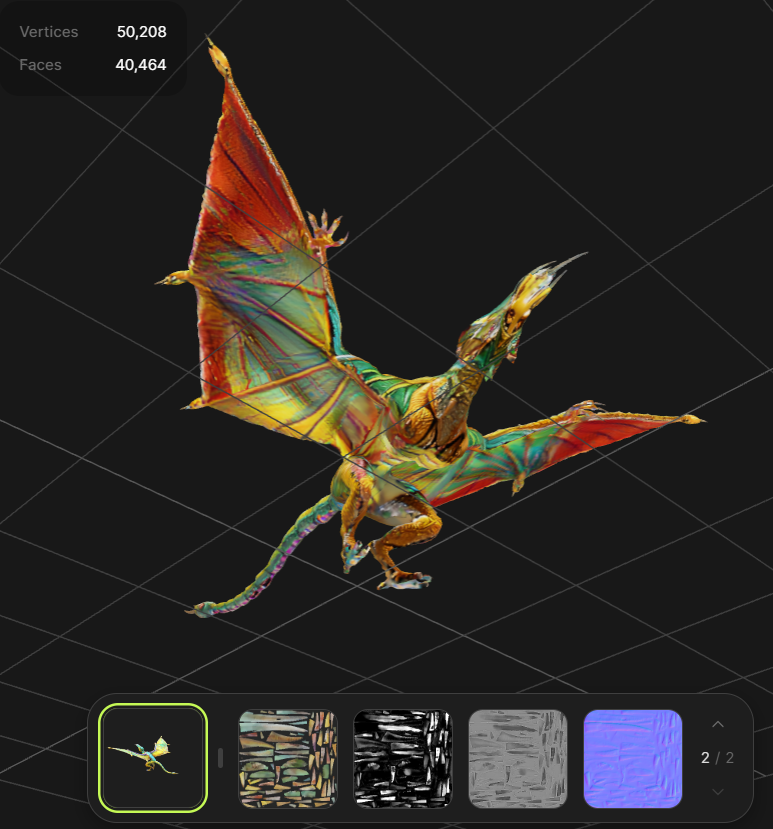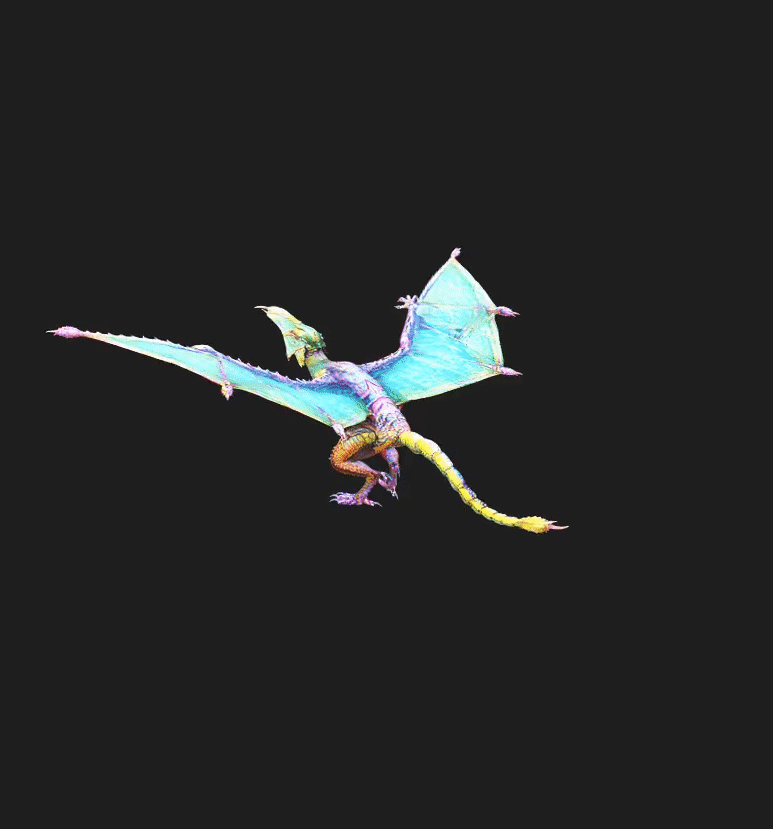Generative AI for 3D models offers inspirational and provocative opportunities. Organizations get a chance to create diverse and complex designs with Gen AI for 3D models to save time and resources and streamline their product development.
In the spring of 2023, it was uncertain whether to dive into Gen AI for 3D models as the technology continued to evolve. Now, there's a certain potential. As interest and investment in 3D AI technologies soar, the market is set to boom, with revenue expected to triple, hitting $1.3 billion by 2032.
SoftServe takes a closer look at the force driving this accelerated growth and the transformative impact it has on industries worldwide.
Explore the potential of Generative AI in 3D models
A single scientific name for Generative AI in 3D models does not exist. Initially, Google often associated the term "Gen AI 3D" with Meshy, a well-known tool for this technology. When searching for "Gen AI in 3D," both "Gen AI 3D" and "3D Gen AI" often appear in search results — hundreds of millions of times. In this article, we keep the original name.
Generative AI for 3D models finds versatile applications, from video game development and film production to architectural visualization and product design, that offer a new horizon of creativity and innovation. Here’s more detail about its applications.

Virtual worlds
Beyond the confines of flat screens, 3D AI models are crucial to create immersive experiences in virtual reality (VR), augmented reality (AR), and robotics. Virtual environments, often comprised of complex and many 3D assets, significantly benefit from the accelerated creation and editing processes enabled by 3D AI models. This forms a cornerstone for developing intricate virtual worlds.

Game development
While not as futuristic as crafting virtual worlds, game development similarly relies on the management of extensive 3D asset collections. 3D AI models streamline this process, enhancing efficiency and allowing for more dynamic and engaging game environments.

Virtual production
In the domain of film and television, virtual production leverages 3D AI models to repurpose 3D and video content. This application is particularly valuable for producing repeatable content in movies and television series, where Generative AI techniques will significantly reduce production times and costs.

Avatars, AI assistants, and agents
Beyond generating text and speech, Gen AI merges with 3D character creation to offer a wide array of possibilities for avatars, AI assistants, and digital agents. This fusion allows for the generation of actions and suggested animations, which opens new avenues for interactive and personalized digital experiences.

Synthetic data
In robotics and autonomous vehicles, such as self-driving cars, robotic vacuum cleaners, and lawnmowers, 3D AI models are instrumental in generating vast amounts of synthetic data. This data is crucial for training algorithms to ensure these machines effectively navigate and operate in the real world.

Real estate
People have viewed buildings and apartments in 3D for quite some time. Gen AI speeds up and improves these 3D views.

Ecommerce
Ecommerce benefits from the use of as much visual information as possible. This allows it to turn 2D images into 3D objects with Gen AI.
Explore the versatility of 3D AI models
There are several ways of using AI to generate 3D models:
- At the highest level, you search for objects that have been previously modeled, scanned, or generated. You also create these objects or scenes.
- At a high level, you convert text into 3D objects and scenes, turn 2D images into 3D images, and transform videos into 3D content.
- At a lower level, techniques like MvS, SfM, NeRF, Gaussian Splatting, and their combinations come into play.
- On the same level, different types of geometry are used, such as Point Clouds, Voxel Grids, Radiance Fields, Meshes, and Textures.
- For data formats, you have options like .fbx, .usd, .glb.
- Another aspect to consider is whether machine learning (ML) is involved or not.
SoftServe will offer more detailed and technical benchmarking in future publications. For now, here’s collected practical information on the tools immediately used to start.
Comparative analysis of 3D AI model tools
Choosing the right 3D AI model tool is crucial. The tool you select affects the model's quality, efficiency, and versatility. The wrong choice will lead to poor-quality models, wasted time and resources, and limitations in creativity and functionality. It may also cause compatibility issues with other software or hardware, making collaboration and integration within your organization more difficult.
To help you make the best choice, SoftServe conducted a comparative analysis of AI tools for 3D models. Numerous evolving Gen AI 3D projects and tools in the market were explored. Initially, for comparison, six out of more than 25 options were selected.
Here are the criteria we used and how we calculated scores:
- Method: One point was awarded for clarity. If the tool explains its working method or approach, even if it's proprietary software, it earns a bonus point.
- Approach: Different generation methods like text-to-3D object and scene, 2D image-to-3D, and video-to-3D were reviewed. Each method earned a tool one point.
- License: The score varies from one to three points, with a more permissive license scoring higher. Tools allowing MIT or commercial use and IP for the client scored three points, while those with non-commercial use or other restrictions scored lower.
- Cost, USD/month: Prices ranged from $9 to $417 per month. The lowest price earned five points, and the highest price earned one point.
- Object types: This metric awarded one point if the tool generated any object type, starting from sneakers and sofas to other objects. If the tool was limited to specific object classes, it scored zero.
- Output geometry: Preferred formats are .usd and .glb. but we also considered .fbx, .blend, .obj, or .mdl. Each format added one point to the tool's score.
- Access type: One access type like browser access was good. Additional options like Discord, source code, model, or API access added flexibility. Each access option contributed one point.
- Delay: A tool scored one point if it delivered prompt results, excluding inherent computing time. If there's a delay beyond computing time, it scores zero.
The evaluation of these criteria provided a clear comparison of the available AI tools for 3D models. The outcomes are depicted in the following table.
* Please note that this research was conducted in January 2024, and the evolving nature of this technology means that capabilities and offerings may change over time.

Practical applications: Transforming text into dynamic 3D animations and advanced AI-driven texturing
In addition to analyzing the features and opportunities of various Gen AI tools for 3D models, SoftServe explored their practical applications.
Ecommerce
SoftServe experimented with text-to-3D animation to create a high-quality animated visual of an astronaut. Below are the results. Using Meshy, Rig, and Mixamo for animation, we manually set key points for the skeleton. Conversely, with Luma AI combined with Animate Anything for animation, no other setup was required.

Text-to-3D-animation with several clicks rig

Text-to-3D-animation with a one-click rig
AI texturing
SoftServe also ventured into AI texturing. The object prompt was "dragon sting wing," and the style prompt was that it is inspired by the vibrant and friendly aesthetics of Pandora from the movie Avatar.
The first image showcases existing UV maps enhanced with AI-generated textures. The second image and the animation present both UV maps and textures generated entirely by AI.

AI texturing using existing UVs of the model

AI-generated texturing and UV maps
Choose the best AI tool for 3D models
SoftServe’s comparative research into Gen AI for 3D models unveiled a promising future and significant impacts across various industries.
Luma AI emerged as the frontrunner, scoring 20 points in a closely contested comparison. Kaedim, with its semi-automatic approach, distinguished itself despite potential delays for more complex models to secure second place alongside Meshy, each with 19 points. Stable Zero123, a product of Stability AI, earned 18 points for its unique offering that includes both code and models, and caters to users interested in customization and extension of the service.
It's important to note that regardless of the pros and cons of each tool, your choice of a tool depends on your specific use case and business requirements. Ultimately, the future of 3D modeling lies in the synthesis of powerful AI tools and the creativity of the human mind.
Let SoftServe help you create a world beyond the ordinary with exceptional expertise in AI solutions. Our Gen AI offering will help transform your operations by enabling efficient decision-making and driving operational efficiencies.
Let’s talk and explore how Gen AI solutions will empower your business.

